America’s Cup: Excitement building for Hutchinson
Published on August 4th, 2020
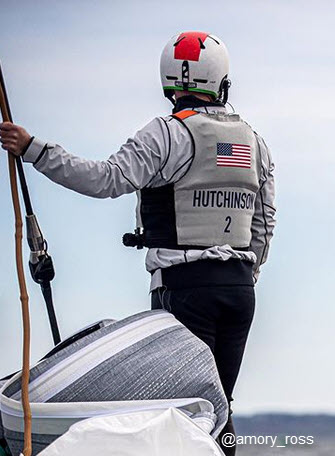 by Michelle Slade
by Michelle Slade
With half of his team and first boat now in New Zealand, Terry Hutchinson, American Magic’s skipper and executive director, reflects on the past five months and how his team has focused on a heads-down, tail-up can-only-move-forward attitude in the face of incredibly challenging times in the world.
The team completed a successful five-hour sailing session on Auckland’s Waitemata Harbor a few days ago, its first since the team’s boat one Defiant arrived in New Zealand at the end of June. Hutchinson’s plain excited about what’s ahead for the 36th America’s Cup.
What have been the challenges of running a team in the current global environment these past five months?
You would have to say that there was no real play book for this. From an American Magic perspective, the opportunity that came out of everything going on in the world was the cancellation of the two World Series events scheduled for earlier in the year. While we missed the chance to benchmark ourselves against the other teams, it gave us the opportunity to continue to stay really focused on foil design and features for boat two.
As a team (of 145+), we’re set up around the world (team base is in Newport, RI, production facility in Bristol, RI, sailing facility in Pensacola, FL, and design offices in Spain). The lockdown really forced us into an environment we’d already been kind of operating in but where we had other distractions – we were going to have the distraction of a regatta coming up, the distraction of having to maintain a boat through that and worry about the other designs. In this new world, all that was deleted so the guys were able to really stay focused on the features and designs coming down the pipeline.
In the same breath, the production side of the team did an incredible job of maintaining the schedule for the build of boat two. We were lucky with the government leadership in Rhode Island and their willingness and ability to keep the manufacturing in Rhode Island open. A lot of the team re-shuffled and operated basically 24 hours a day in three different shifts and stayed on track with the second boat. So while we did not do the regattas, the upside was that we maintained the build schedule and were really able to focus in on the design components and what was going on with boat two.
From the human side there’s obviously the anxiety that the situation creates for everybody and as a team I think we have definitely stayed in a hunkered down mentality in that we continue to be mindful of the bigger picture that we have to as a team – we stay safe and that any community we move into we have a responsibility to make sure we don’t do it in a way that we’re going to get anybody sick – you’re definitely more tuned in and around of your surroundings and take the necessary steps to be smart and safe.
How do you plan for success in an environment where you’ve not had an opportunity to go up against the competition?
From the design side, you continue to design and make sure that what you are designing gets the appropriate attention; the sailors for their part have spent a lot of time working on the simulator and doing things like funneling the design features through the simulator – that helps support development of a fast boat.
The sailors spend a lot of time on the grinding machines and training, and the boat builders keep building. The fruits of all those labors will come out later in the year – so much of this competition has already been decided. It’s simply a matter for us to make sure we get the boat out on the water, that the boat is reliable, and that we learn how to sail it as fast as we possibly can – and I’m speaking as much about boat two as anything.
Are you feeling any level of anxiety around that?
Every day (laughs). Really, the only anxiety comes from a bit of the unknown because we haven’t sailed against the other teams. Yet in saying that, the designers that we are working with and the people inside our team are really experienced people, so it softens the anxiety level.
More often than not, when we’ve had Marcelino’s boats (designer Marcelino Botin), they’re great boats and have always done the job for us. At the end of the day what you want to see is in the sailors’ hands. If everybody stays committed to the process of their jobs and doing their jobs, being methodical, it doesn’t mean you don’t have problems, it means that you can also solve them pretty quickly.
With five America’s Cup campaigns under your belt, what is outstanding about AC75 so far?
The lack of sailing! I say that in a serious way in some ways – remembering we did 90+ days in our mule test boat and so from a sailing side, of all the teams, our team has for sure had the most time on the water on a foiling prototype or AC75 when you combine the two together.
Going into the Prada Cup Challenger Selection Series in January and February 2021, the Challengers will have only done four days of racing to prepare (America’s Cup World Series third and final – and only – event is scheduled for December 17-20). It’ll be the first regatta in my life where I’ve had just four days to prepare – kind of like the Congressional Cup where you have a day and a half to get warmed up and then into it!
Going back to the question, I was lucky with the first campaign I did which was with the St Francis Yacht Club and AmericaOne. It was great to work with that team and to learn from Paul (Cayard) and John (Kostecki), people who had AC experience and to see firsthand what it all was at a very high level. Then I went to sail with Stars & Stripes, and even though we weren’t as successful there, you still learn a lot from that experience – our boats were nice, we just lacked about two years of time.
In 2007 with Team New Zealand was another great experience like AmericaOne and a team with 20 years of intellectual property in the IACC class yacht, straight away you were starting at a high level. The sailors in the sailing team were still feeling the stings from the loss in 2003 and thought that they had something to prove so that was good, yet in that regatta we lost to Alinghi 5-2.
No more obvious there was the boat speed and the fastest boat wins the America’s Cup. That’s an absolute fact. In 2013 I worked for Artemis and again, another really good learning experience.
Generally speaking, you learn more from the bad experiences than from the good (laughs). When you win, you think you’ve done everything well when actually you probably haven’t but you probably had a fast boat. When you lose it highlights all the deficiencies and weaknesses of the other team in the program.
In this environment, we are incredibly fortunate and incredibly lucky to be able to have the support of Hap Fauth, Doug DeVos, and Roger Penske, and the NYYC. Each one of those entities or people, it’s all exactly what you want. We’re in a really hard time and their support has never wavered, the Club’s support has never wavered.
Those previous four opportunities led to this one and in this one, it’s hard to say that we don’t have everything that we need yet the one thing that we do need is time and the clock is ticking (laughs).
Does it suit you being in a management role?
I like sailing. There’s very little sailing right now but we’ve done a lot in the mule and we’ve had 40+ days on the 75 but I know through past experience in order for the team to win we have to make sure that the right people are in the right spots. We’ve done that with the makeup of our sailing team.
I support that because past experience says you can’t do it in a more traditional way where the person who is steering the boat is also doing all these different things. It’s good for us to keep in our respective roles and allow those roles to flourish. At the same time, I still love the racing so if I’m up for it, I’m up for it but if I’m not, I’ll support the team from the chase boat.
What’s it like helming the AC75?
It’s awesome – the sensation of speed in the mule was impressive as you were much closer to the water and you were much closer to the elements. The 75 goes faster and has that bigger boat feel to it but when you are going the speeds that we have gone, it’s pretty darn impressive. It’s really awesome! It takes an absolute sailor-focus to steer the boat.
There’s none of the usual AC pageantry this time, just four teams – how does that feel?
We’re working pretty hard to not stick our heads out and see it for more than what it is which is a sailing competition and a great technological race. There are a lot of things that go on in the background and there’s probably big intrigue in what makes the America’s Cup the America’s Cup but from an American Magic perspective, we’re focused on the sailing and the two other Challengers who are really good. We know to beat a Challenger in the match we’re going to have to sail really well. That’s really all we’re thinking about.
The AC is such a tech play – what did you learn to sail on and in your wildest dreams could you ever have imagined you’d be sailing the boat you are today?
I started sailing when I was about three years old more because I annoyed my parents and my brothers and sister so much that stuck me in a little Dyer dinghy behind my dad’s Concordia yawl which is a beautiful classic wooden boat. That was my beginnings in and around Maryland and the Chesapeake Bay. From there I gravitated to a Laser, then a 420 and onto other sailing.
So to say I probably would have ended up here…I’m not that forward thinking! But I was competitive – I was given more red cards in soccer games for being too aggressive than I probably was on the field…there are issues there! (laughs)
Details: www.americascup.com
36th America’s Cup
In addition to Challenges from Italy, USA, and Great Britain that were accepted during the initial entry period (January 1 to June 30, 2018), eight additional Notices of Challenge were received by the late entry deadline on November 30, 2018. Of those eight submittals, entries from Malta, USA, and the Netherlands were also accepted. Here’s the list:
Defender:
• Emirates Team New Zealand (NZL)
Challengers:
• Luna Rossa (ITA) – Challenger of Record
• American Magic (USA)
• INEOS Team UK (GBR)
• Malta Altus Challenge (MLT) – WITHDRAW
• Stars + Stripes Team USA (USA)
• DutchSail (NED) – WITHDRAW
Of the three late entries, only Stars+Stripes USA remains committed, however, it is unclear what entry payments have been made, nor is there knowledge of a boat being actively built or sailing team assembled.
Key America’s Cup dates:
✔ September 28, 2017: 36th America’s Cup Protocol released
✔ November 30, 2017: AC75 Class concepts released to key stakeholders
✔ January 1, 2018: Entries for Challengers open
✔ March 31, 2018: AC75 Class Rule published
✔ June 30, 2018: Entries for Challengers close
✔ August 31, 2018: Location of the America’s Cup Match and The PRADA Cup confirmed
✔ August 31, 2018: Specific race course area confirmed
✔ November 30, 2018: Late entries deadline
✔ March 31, 2019: Boat 1 can be launched (DELAYED)
✔ 2nd half of 2019: 2 x America’s Cup World Series events (CANCELLED)
✔ October 1, 2019: US$1million late entry fee deadline (NOT KNOWN)
✔ February 1, 2020: Boat 2 can be launched (DELAYED)
✔ April 23-26, 2020: First (1/3) America’s Cup World Series event in Cagliari, Sardinia (CANCELLED)
✔ June 4-7, 2020: Second (2/3) America’s Cup World Series event in Portsmouth, England (CANCELLED)
• December 17-20, 2020: Third (3/3) America’s Cup World Series event in Auckland, New Zealand
• January 15-February 22, 2021: The PRADA Cup Challenger Selection Series
• March 6-15, 2021: The America’s Cup Match
Youth America’s Cup Competition
• February 18-23, 2021
• March 1-5, 2021
• March 8-12, 2021
AC75 launch dates:
September 6 – Emirates Team New Zealand (NZL), Boat 1
September 10 – American Magic (USA), Boat 1; actual launch date earlier but not released
October 2 – Luna Rossa (ITA), Boat 1
October 4 – INEOS Team UK (GBR), Boat 1
Details: www.americascup.com


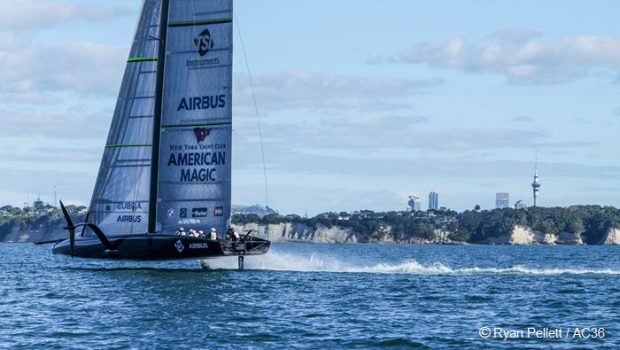


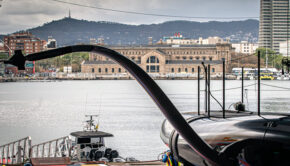
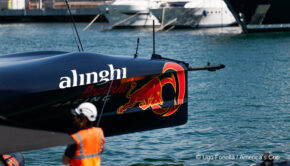
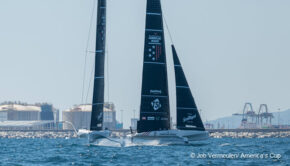

 We’ll keep your information safe.
We’ll keep your information safe.